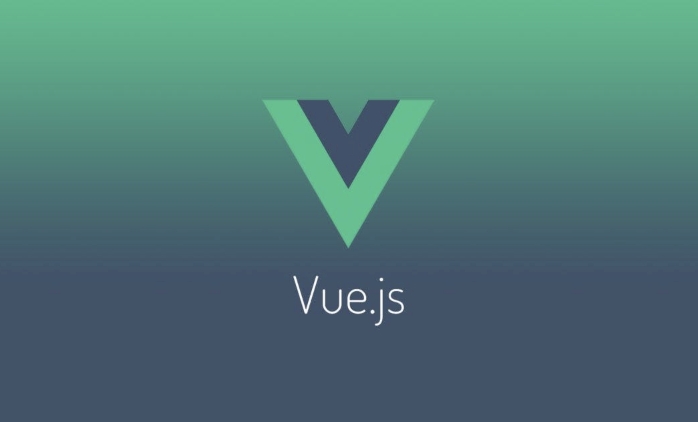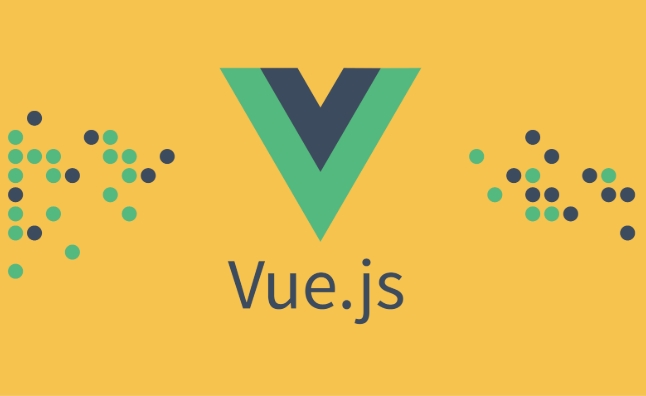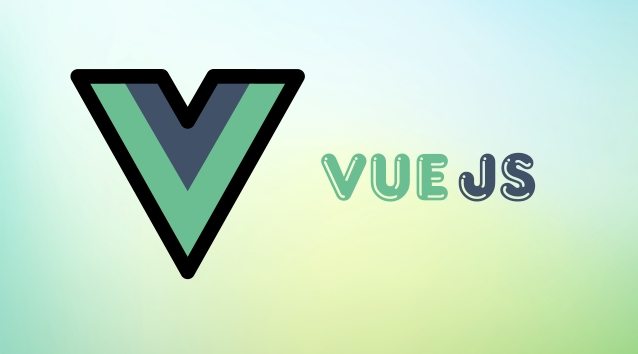How to implement parent-child component communication in Vue
Aug 02, 2025 am 11:40 AMThe parent component passes data to the child component through props, and the child component receives and uses it through props; 2. The child component triggers a custom event to send data to the parent component through $emit, and the parent component handles it through event listening; 3. Use v-model to achieve two-way binding between parent and child components, which is essentially the syntax sugar of prop binding and event transmission. Always follow the principle of "props down, events up" to ensure predictability and maintainability of component communication.

In Vue.js, parent-child component communication is a fundamental concept that allows components to share data and respond to changes. Here's how to implement it effectively using standard Vue patterns.

1. Passing Data from Parent to Child with Props
To send data from a parent component to a child, use props . Props are custom attributes you can register on a child component to receive data.
Child Component (ChildComponent.vue):

<template>
<div>
<p>{{ message }}</p>
</div>
</template>
<script>
export default {
props: {
message: {
type: String,
required: true
}
}
}
</script>Parent Component (ParentComponent.vue):
<template>
<div>
<ChildComponent :message="parentMessage" />
</div>
</template>
<script>
import ChildComponent from './ChildComponent.vue'
export default {
components: {
ChildComponent
},
data() {
return {
parentMessage: 'Hello from parent!'
}
}
}
</script> Here, parentMessage is passed to the child via the message prop. The : before message indicates a dynamic binding.

2. Sending Data from Child to Parent with Events
To communicate from child to parent, use custom events with $emit . The child emits an event, and the parent listens for it.
Child Component (ChildComponent.vue):
<template>
<button @click="notifyParent">
Send Message to Parent
</button>
</template>
<script>
export default {
methods: {
notifyParent() {
this.$emit('custom-event', 'Hello from child!')
}
}
}
</script>Parent Component (ParentComponent.vue):
<template>
<div>
<p>{{ childMessage }}</p>
<ChildComponent @custom-event="handleEvent" />
</div>
</template>
<script>
import ChildComponent from './ChildComponent.vue'
export default {
components: {
ChildComponent
},
data() {
return {
childMessage: ''
}
},
methods: {
handleEvent(message) {
this.childMessage = message
}
}
}
</script> When the button is clicked, the child emits custom-event , and the parent updates childMessage via the handleEvent method.
3. Using v-model for Two-Way Binding (Optional)
For two-way communication, especially with form inputs, you can use v-model on a component, which is syntactic sugar for binding a prop and emitting an input event.
Child Component:
<template>
<input :value="modelValue" @input="$emit('update:modelValue', $event.target.value)" />
</template>
<script>
export default {
props: ['modelValue']
}
</script>Parent Component:
<template>
<ChildComponent v-model="parentData" />
</template>
<script>
export default {
data() {
return {
parentData: ''
}
}
}
</script> This syncs parentData with the child's input field automatically.
Key Notes:
- Always validate props with proper types and defaults.
- Avoid mutating props directly in the child; instead, emit events.
- Use meaningful event names (eg,
update:titleorsubmit-form). - In Vue 3, you can also use
definePropsanddefineEmits(in<script setup></script>) for a more concise syntax.
Basically, props go down, events go up — stick to this flow, and your components will stay predictable and maintainable.
The above is the detailed content of How to implement parent-child component communication in Vue. For more information, please follow other related articles on the PHP Chinese website!

Hot AI Tools

Undress AI Tool
Undress images for free

Undresser.AI Undress
AI-powered app for creating realistic nude photos

AI Clothes Remover
Online AI tool for removing clothes from photos.

Clothoff.io
AI clothes remover

Video Face Swap
Swap faces in any video effortlessly with our completely free AI face swap tool!

Hot Article

Hot Tools

Notepad++7.3.1
Easy-to-use and free code editor

SublimeText3 Chinese version
Chinese version, very easy to use

Zend Studio 13.0.1
Powerful PHP integrated development environment

Dreamweaver CS6
Visual web development tools

SublimeText3 Mac version
God-level code editing software (SublimeText3)
 How to develop a complete Python Web application?
May 23, 2025 pm 10:39 PM
How to develop a complete Python Web application?
May 23, 2025 pm 10:39 PM
To develop a complete Python Web application, follow these steps: 1. Choose the appropriate framework, such as Django or Flask. 2. Integrate databases and use ORMs such as SQLAlchemy. 3. Design the front-end and use Vue or React. 4. Perform the test, use pytest or unittest. 5. Deploy applications, use Docker and platforms such as Heroku or AWS. Through these steps, powerful and efficient web applications can be built.
 Laravel Vue.js single page application (SPA) tutorial
May 15, 2025 pm 09:54 PM
Laravel Vue.js single page application (SPA) tutorial
May 15, 2025 pm 09:54 PM
Single-page applications (SPAs) can be built using Laravel and Vue.js. 1) Define API routing and controller in Laravel to process data logic. 2) Create a componentized front-end in Vue.js to realize user interface and data interaction. 3) Configure CORS and use axios for data interaction. 4) Use VueRouter to implement routing management and improve user experience.
 How to work and configuration of front-end routing (Vue Router, React Router)?
May 20, 2025 pm 07:18 PM
How to work and configuration of front-end routing (Vue Router, React Router)?
May 20, 2025 pm 07:18 PM
The core of the front-end routing system is to map URLs to components. VueRouter and ReactRouter realize refresh-free page switching by listening for URL changes and loading corresponding components. The configuration methods include: 1. Nested routing, allowing the nested child components in the parent component; 2. Dynamic routing, loading different components according to URL parameters; 3. Route guard, performing logic such as permission checks before and after route switching.
 What is the significance of Vue's reactivity transform (experimental, then removed) and its goals?
Jun 20, 2025 am 01:01 AM
What is the significance of Vue's reactivity transform (experimental, then removed) and its goals?
Jun 20, 2025 am 01:01 AM
ReactivitytransforminVue3aimedtosimplifyhandlingreactivedatabyautomaticallytrackingandmanagingreactivitywithoutrequiringmanualref()or.valueusage.Itsoughttoreduceboilerplateandimprovecodereadabilitybytreatingvariableslikeletandconstasautomaticallyreac
 What are the core differences between Vue.js and React in componentized development?
May 21, 2025 pm 08:39 PM
What are the core differences between Vue.js and React in componentized development?
May 21, 2025 pm 08:39 PM
The core differences between Vue.js and React in component development are: 1) Vue.js uses template syntax and option API, while React uses JSX and functional components; 2) Vue.js uses responsive systems, React uses immutable data and virtual DOM; 3) Vue.js provides multiple life cycle hooks, while React uses more useEffect hooks.
 How can internationalization (i18n) and localization (l10n) be implemented in a Vue application?
Jun 20, 2025 am 01:00 AM
How can internationalization (i18n) and localization (l10n) be implemented in a Vue application?
Jun 20, 2025 am 01:00 AM
InternationalizationandlocalizationinVueappsareprimarilyhandledusingtheVueI18nplugin.1.Installvue-i18nvianpmoryarn.2.CreatelocaleJSONfiles(e.g.,en.json,es.json)fortranslationmessages.3.Setupthei18ninstanceinmain.jswithlocaleconfigurationandmessagefil
 Vue responsive principle and solution to not trigger view updates when array updates?
May 20, 2025 pm 06:54 PM
Vue responsive principle and solution to not trigger view updates when array updates?
May 20, 2025 pm 06:54 PM
When Vue.js handles array updates, the view is not updated because Object.defineProperty cannot directly listen to array changes. Solutions include: 1. Use the Vue.set method to modify the array index; 2. Reassign the entire array; 3. Use the rewritten mutation method of Vue to operate the array.
 What are the benefits of using key attributes (:key) with v-for directives in Vue?
Jun 08, 2025 am 12:14 AM
What are the benefits of using key attributes (:key) with v-for directives in Vue?
Jun 08, 2025 am 12:14 AM
Usingthe:keyattributewithv-forinVueisessentialforperformanceandcorrectbehavior.First,ithelpsVuetrackeachelementefficientlybyenablingthevirtualDOMdiffingalgorithmtoidentifyandupdateonlywhat’snecessary.Second,itpreservescomponentstateinsideloops,ensuri






